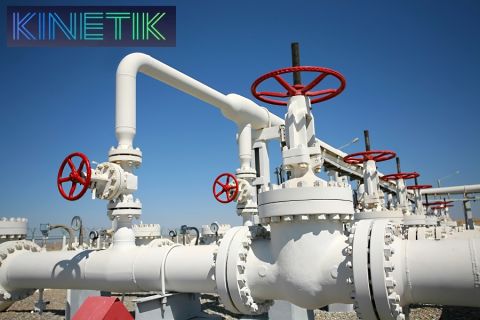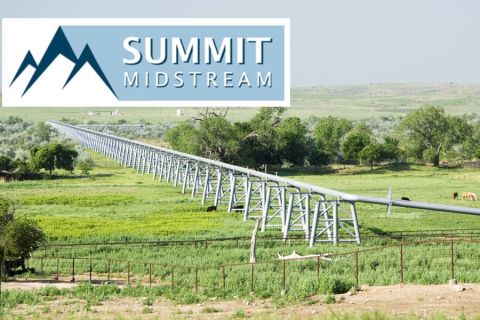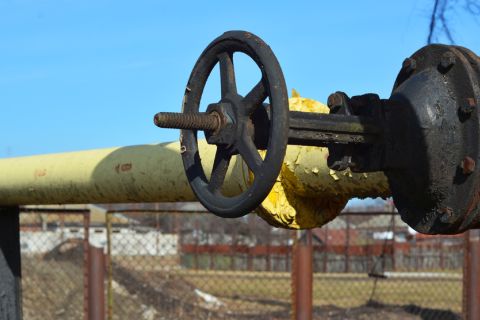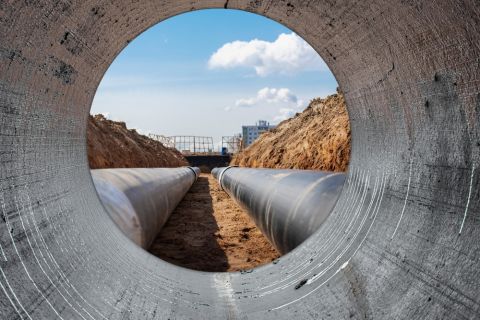In spite of continuing low commodity prices affecting natural gas and NGL marketers and producers, the ongoing expansion and growth of natural gas production in areas not historically well served by pipeline and processing infrastructure has created demand for the development of new infrastructure. This situation presents a unique challenge to infrastructure project developers—how to keep up with the increasing volume and changing production locations of natural gas by developing new projects, while the revenue and creditworthiness of their customers are affected by lower commodity prices.
Even though natural gas prices remain depressed when compared to the heights experienced over the last decade, the production boom that has taken off over the same period continues.
Moreover, in many cases this production boom has resulted in new production locations that were previously destinations or through-points for pipelines. To enable new supplies to reach downstream markets, there remains a need for new pipeline development, changes to the direction of flow on many existing pipelines, and the repurposing of other existing gas infrastructure for NGL.
The challenge of financing and developing this new transportation infrastructure, while commodity prices have fallen or remained stagnant, continues to confront project developers and their partners, lenders and investors. These developers have had to adapt to the low commodity price environment while continuing to ride the wave of continued demand for new infrastructure.
In this environment, developers should take special care in evaluating the credit profile of potential customers that could make a project financeable with steady revenue for transportation throughput, but at the same time could risk the project’s viability by over-estimating the commodity price picture in both the near and the long term.
Falling prices, rising demand
The Henry Hub spot price for natural gas has fallen precipitously since the heights of the last decade, from a high in excess of $12 per million Btu (MMBtu) in 2005 and again in 2008, to below $3 per MMBtu earlier this year. Despite these falling prices, the boom in natural gas production from shale plays around the country has so far continued apace, with shale gas occupying a large and growing share of total U.S. domestic natural gas production, which is projected to approach 40 trillion cubic feet (Tcf) annually by 2040.
Shale gas production is projected to increase from 9.7 Tcf in 2012 to 19.8 Tcf in 2040, increasing from a 40% share of total domestic production to 53% during the same period.
The growth of natural gas production from shale areas is characterized by a changing market geography that will likely continue to drive demand for new pipeline transportation and related infrastructure to move the commodities to market.
With natural gas demand and domestic production both increasing, the market continues to incentivize development of infrastructure to move shale gas to market from areas historically underserved by transportation take-away infrastructure, including the Marcellus region. Indeed, the Energy Information Administration estimates that Marcellus shale production alone will exceed the demand for natural gas in the Mid-Atlantic and New England regions from 2016 through 2040, which will require transportation of that production to other areas and markets.
In addition, the construction and conversion of LNG facilities to export domestically produced natural gas from points on U.S. coasts will require the construction of new infrastructure and the repurposing of existing infrastructure to bring that product to the export facilities, where previously infrastructure was required to move imported natural gas from those areas to the interior of the country.
However in the short term, the commodity price picture can act as a counterweight to infrastructure development. While the continued growth of domestic natural gas production and demand will likely outweigh the pressure of low or stagnant commodity prices, those prices can burden the development of needed infrastructure projects with the credit and liquidity concerns of the very customers project developers rely on to make throughput commitments that enable the financing of their projects.
Credit challenges
Major new pipeline projects (whether transporting natural gas or NGL) typically require significant financial commitments from prospective shippers in order to secure financing and regulatory approvals. In exchange for committing an assured revenue stream to the planned project in the form of reservation charge payments for capacity over a multiyear contract term (or in the case of liquids, take-or-pay commitments for a certain amount of throughput over the term), such shippers (often referred to as anchor shippers) typically seek guarantees that the capacity for their volumes will not be subject to curtailment—and that they will pay transportation rates that reflect their commitments to the project.
Given the importance to pipeline project developers of the revenue commitments of their anchor shippers, the credit profiles of those anchor shippers are closely examined and subject to rigorous contractual commitments and potential re-evaluation.
Producers and commodity merchants that lack strong credit ratings— or perhaps lack any ratings at all—are typically required to post letters of credit or guarantees from strong credit counterparties in order to make their commitments to a project bankable for the project developers. Those commitments form the basis of reliable revenue streams that allow lenders to finance projects and investors to give those projects the green light to proceed with the required major capital expenditures. The revenue commitments and credit support of producers and other market participants whose economic viability is tied to commodity prices is necessarily threatened by sustained dips in those prices.
This reality makes the careful evaluation of shipper creditworthiness of top importance at this moment of rising demand for new pipeline infrastructure and falling, low or stagnant commodity prices.
Stopping a project
With project development spurred on by rising consumption and burgeoning production that is at risk of being shut in without new outlets, both pipelines and producers alike might seem incentivized to gloss over the impact of depressed commodity prices on the shippers’ creditworthiness in the interest of pushing a project forward. However, just as one or two major anchor shippers can move a project forward, the failure of those shippers to demonstrate continued creditworthiness can stop a project in its tracks.
For this reason, project developers are well advised to seek anchor shippers for projects that have, for example, excellent balance sheets and a proven ability to generate revenue from assets that are not beholden to a limited upstream supply source or downstream market.
Likewise, producers who can secure guarantees from affiliates or other entities that have excellent investment ratings and cash on hand are attractive candidates to backstop projects to move new supplies of natural gas and NGL out of shale production areas to market. Hedging strategies also play a serious role in the viability of potential anchor shippers at a time of low commodity prices.
Shrewd hedging
Market participants who have designed shrewd hedging strategies around maintaining strong-but-realistic cash flows are well positioned with respect to new pipeline projects seeking anchor shippers. Proper hedging can alleviate short-term cash flow problems caused by commodity price dips, or strategic drilling and production slow-downs in order to wait out unfavorable market conditions.
With the combination of factors driving both infrastructure development and the commodity price dip of the last several years, project developers will continue to face issues in evaluating the creditworthiness of shippers and potential shippers. This simultaneous pressure to develop infrastructure and the difficulties in contracting with creditworthy customers to finance that development is likely to continue in this environment of low commodity prices and increasing demand for and production of the commodities.
The issue of shipper creditworthiness is key to conceptualizing the development of a pipeline project, and it is never too early in the process to engage subject matter experts on credit and related bankruptcy issues in order to formulate credit evaluation standards and identify potential issues that are likely to arise as the process moves into the negotiation and contracting phase.
By engaging early on these issues and drawing on appropriate legal and credit analysis expertise at all stages of a project’s development, pipeline developers can avoid potential pitfalls in bringing a project to a successful completion.
Mark Lewis and Kirk Morgan are partners and George Fatula is an associate at Bracewell & Giuliani LLP
Recommended Reading
Kinetik Holdings Enters Agreement to Pay Debt
2024-04-04 - Kinetik Holdings entered an agreement with PNC Bank to pay down outstanding debt.
Summit Midstream Launches Double E Pipeline Open Season
2024-04-02 - The Double E pipeline is set to deliver gas to the Waha Hub before the Matterhorn Express pipeline provides sorely needed takeaway capacity, an analyst said.
Summit Midstream Sells Utica Interests to MPLX for $625MM
2024-03-22 - Summit Midstream is selling Utica assets to MPLX, which include a natural gas and condensate pipeline network and storage.
Kinder Morgan Sees Need for Another Permian NatGas Pipeline
2024-04-18 - Negative prices, tight capacity and upcoming demand are driving natural gas leaders at Kinder Morgan to think about more takeaway capacity.
Targa Resources Forecasts Rising Profits on 2024 Exports
2024-02-20 - Midstream company Targa Resources reports a record fourth quarter in volumes and NGL fractionation.





